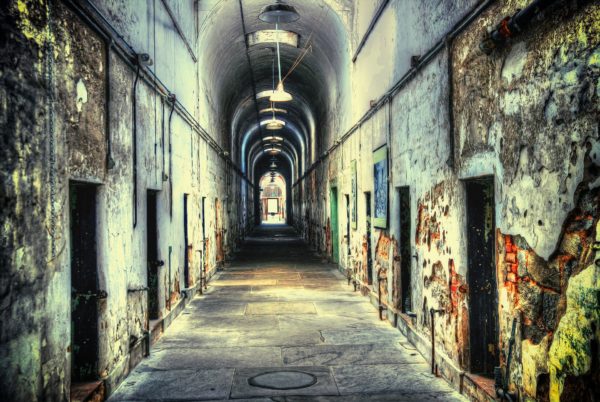
(Royalty-free photograph courtesy of Pixabay, at pixabay.com.)
Snakes. Heights. Needles. Things that make us scream and run.
Caltech is studying the nature of fear. And they recently chose a unique but highly effective venue, in which to conduct their research.
Podcast: Play in new window | Download
Subscribe: RSS
During the 2019 Halloween haunt season, Caltech partnered with extreme Orange County haunted house The 17th Door.
Led by Caltech social scientists Colin Camerer and Dean Mobbs, this particular study examined fear in what amounted to an ideal environment: a non-laboratory situation where guests were not placed in actual danger. (Colin Camerer is the Robert Kirby Professor of Behavioral Economics and director of the T&C Chen Center for Social and Decision Neuroscience in Caltech’s Tianqiao and Chrissy Chen Institute for Neuroscience. Meanwhile, Dean Mobbs is an assistive professor of cognitive neuroscience, as well as a Chen Scholar at Caltech.)
And their onsite work at The 17th Door allowed them to take a good look at what happens when something scares us–even in fun.
As guests arrived to experience The 17th Door’s scream-inducing immersive storytelling, Caltech researchers first asked if they’d like to participate in the study.
Once guests agreed, the Caltech staff used modern technology and questionnaires to measure their reactions to haunt occurrences. One of the study’s long-term goals, according to Caltech’s website, is to determine how well people can learn to control their reactions in extreme situations.
Virginia Fedrigo is a Caltech research technician assistant who worked on the project. We talked about her work, what she observed as participants arrived and the next steps in this research.
On this edition of Over Coffee®, you will hear:
-
How the Caltech research study came about;
-
What the Caltech team’s first day at The 17th Door was like;
-
How the research team conducted their experiment onsite;
-
The way the team used technology to measure visitors’ fear reactions;
-
Where the team are, currently, on their study;
-
How The 17th Door approached creating their haunt “from a scientific point of view”;
-
Some of the goals of this particular research study;
-
What research says, about the ways we experience fear;
-
Something Virginia noticed frequently while working onsite with researchers;
-
How some parts of The 17th Door are psychologically engineered to work with this phenomenon;
-
What Virginia found most interesting about observing people, as they entered the haunt
-
What’s next, for the Caltech team.
(Like to know more about the talented team behind The 17th Door? Here’s our 2018 interview with professional haunter Shar Mayer, who trains their performers!)
